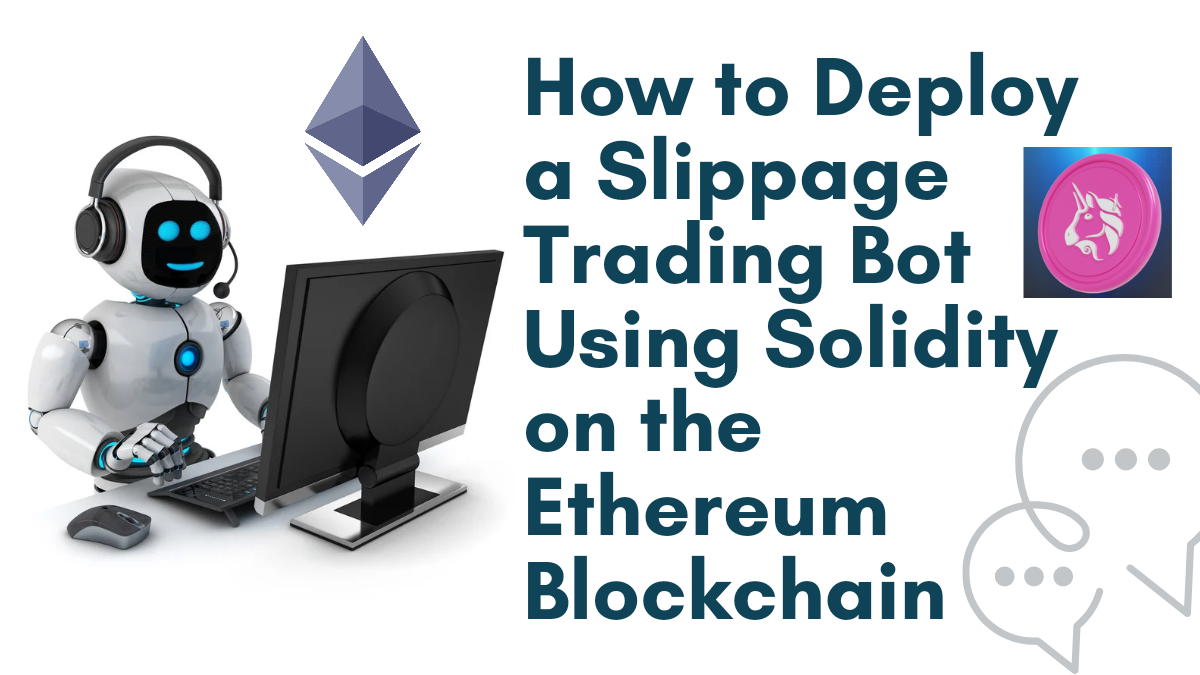Hi, everyone! How are you today? In this blogpost, I’ll guide you through the whole process of deploying the trading bot I came up with using chatbots + solidity – it’s an object-oriented programming language specifically created for ethereum. After reading this document, whose aim focuses on yield farming through automated exchange between different pairs of cryptocurrencies without engaging human beings manually as intermediaries?’, `you will be able to use the ‘Slippage Trading Bot’.”
What is a Slippage Trading Bot?
A slippage trading bot is designed to exploit price differences that occur due to slippage at the time of transactions.The bot monitors the mempool for pending transactions and places our transaction with a higher gas fee, ensuring it gets processed first. By doing this, the bot profits from the price differences.
“Don’t worry, it might seem tough, but it’s actually quite simple and doesn’t require any coding skills to get started. The bot’s profits mainly depend on how congested the Ethereum network is and how much Ether you use.”
Prerequisites
Trust Wallet or Coinbase Wallet users, whose steps mimic, should have that MetaMask browser extension has been mounted and configured with Ethereum mainnet.
Step-by-Step Guide to Deploy the Slippage Trading Bot
1.Access Remix
- Go to Remix, an online tool used to compile and deploy smart contracts on the Ethereum mainnet. The link to Remix is included in the description below.
2.Create a New File
- Once on Remix, navigate to the left sidebar and create a new file in the contracts directory. Name this file
tradingBot.sol.
3.Add the Source Code
- Locate the bot’s source code link in the description, copy the code, and paste it into the
tradingBot.solfile you just created.
4.Verify Addresses
- Focus on lines 46 and 47, which include the addresses of wrapped Ether tokens. Open a new tab and verify these addresses on etherscan.io to ensure they are correct.
5.Compile the Contract
- Navigate to the Solidity compiler section. The bot is written in Solidity version 0.8.20. Choose 0.8.20 from the compiler settings, set the language to Solidity, and leave the EVM version as default. Click the compile button and wait for the process to finish. A green checkmark signifies successful compilation.
6.Deploy the Contract
- Go to the deploy and run transactions section, select injected provider as the environment, and click the orange deploy button. Approve the gas fee payment in MetaMask, and wait for the deployment confirmation.
7.Operational Functions
- Once deployed, scroll down to the deployed contracts field. Copy and save the address of your smart contract. This will allow you to access it later. Use the start button to initiate the bot’s trading in the mempool, the stop button to cease trades, and the withdrawal button to transfer funds and profits back to your wallet.
8.Verify and Fund the Contract
- Copy the smart contract address and verify its creation on etherscan.io. Next, fund your bot contract with Ethereum via MetaMask. Larger deposits can potentially yield higher profits.
9.Start the Bot
- Back in Remix, click the start button to activate the bot. Pay the necessary gas fees, and let the bot operate. You can choose to set higher gas fees for faster execution.
10.Monitor and Withdraw Profits
- Let the bot run for a period (e.g., 24-48 hours), then review its performance. You can withdraw profits by using the withdrawal function in Remix. Recompile the bot’s code if needed, and ensure you’re using the same MetaMask wallet.
Conclusion
Setting up and running a slippage trading bot on the Ethereum blockchain for generating passive income can be very simple. You need to always check how the bot is performing and change the strategies used in line with conditions within the network.
Through these steps, the slippage trading bot will be operational hence automating trades while taking advantage of slippage opportunities on Ethereum blockchain. Enjoy trading!

